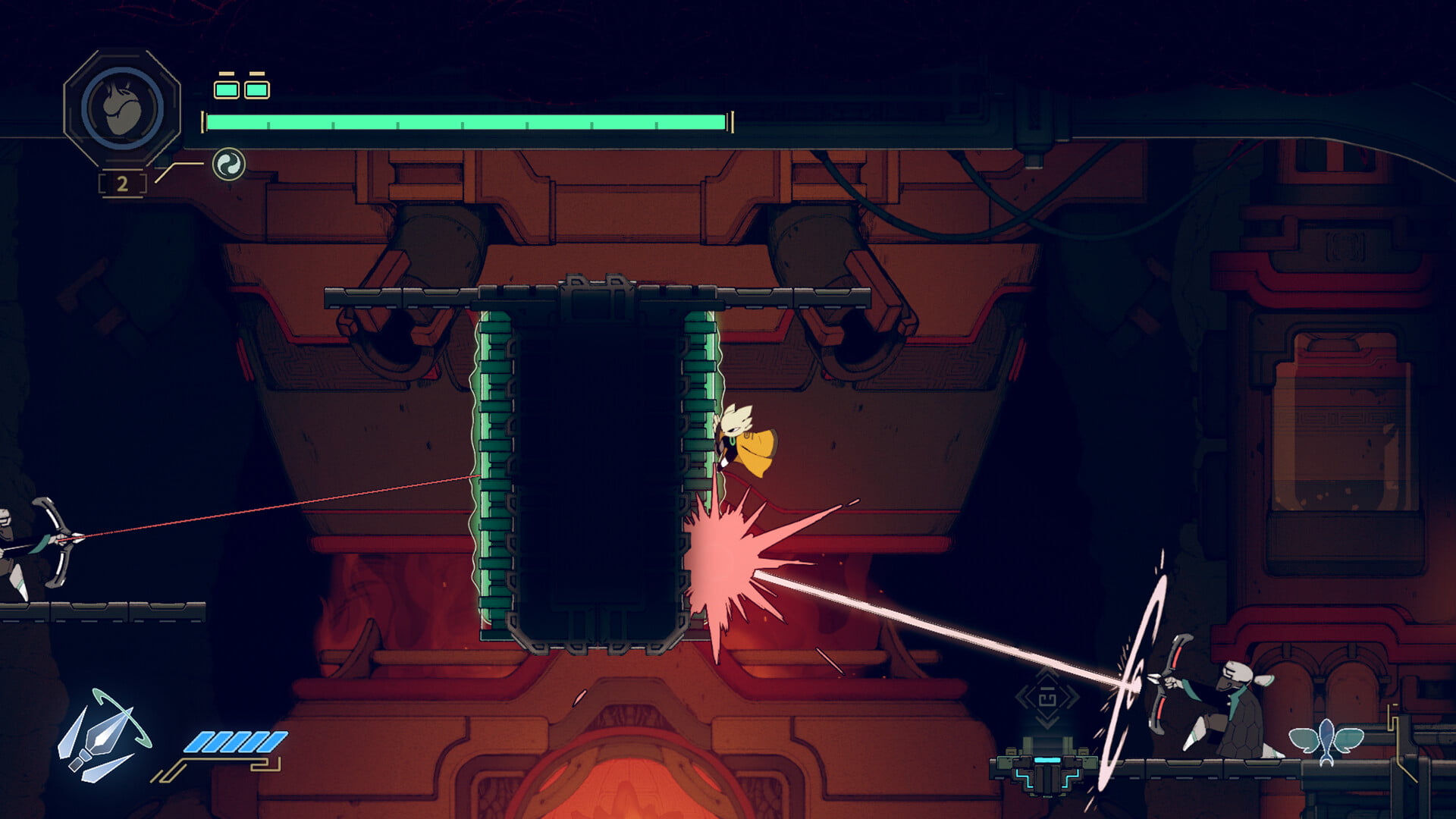Almost every boss fight in Nine Sols has, at one point or another, left me literally one mistake away from death. I could block attacks consistently, dodging the occasional unblockable, getting hits in wherever I could, but no matter how well I was playing, I would almost always end up in the same place: my health a pixel away from zero. In most other games, I fucked up big time to be put in that position. In Nine Sols, that’s just par for the course.
Nine Sols from Red Candle Games is a side-scrolling action game inspired by Sekiro. It is a game where parries are paramount. Sure you can jump and dodge through attacks just fine, but you cannot rely on evasion alone. You need to parry to succeed. But Nine Sols isn’t cruel. It understands the inherent difficulty of parry-focused gameplay. It walks the fine line of making it difficult without becoming a nightmare, ensuring play is challenging without being punitive.
The key lies in the cost of a mistimed parry. If you’re too early or late, rather than getting hit, you still block the attack, but also take “internal damage,” which can be regained as long as you don’t take a direct hit. The regen is slow, however, and is interrupted if you aren’t able to perform perfect parries. Crucially, you can effectively just mash the parry button and you’re likely to still block attacks just fine, so as long as you can find moments to heal or recover from internal damage, you can still make a stand.

Easier said than done, of course. True to its inspirations, Nine Sols doesn’t hold back. Every fight demands absolute focus. They’re all thrilling, each fight bringing its own unique dynamics that make them immediately memorable, but also really fucking difficult. The margin for error is pretty slim, every direct hit erasing huge swaths of health and reducing how much wiggle room I had. This is why so many fights pushed me to the brink. Internal damage adds up fast and mistakes can hurt. As attack patterns become faster and more complex, settling into and maintaining a rhythm only becomes harder. One late-game boss in particular loved to mix up their attack patterns just as I got used to them and could reasonably counterattack.
Constantly being on the edge of defeat is stressful – especially deep in a fight and with little healing available. Performing well under pressure is hard enough under the best circumstances, and Nine Sols regularly puts you on the back foot if you aren’t able to dial in boss patterns and the parry and dodge timings. The generous window to block attacks helps immensely – a lot of fights literally ended with me on the verge of defeat – but even then, it only does so much to ease the cost of a single mishap.
(Quick aside: It’s important to note that the game does include a couple of difficulty tweaks. Damage dealt and received can be altered on a sliding scale to make things as easy as you want. After the years of recursive discourse around From Software games and “easy modes,” between this and Another Crab’s Treasure, it’s nice to see more games proving what we all already knew: that you can make games made to be difficult and still be approachable.)

But parrying isn’t just for defense. Every blocked attack builds qi, which is used to attach talismans that explode, dealing a lot of damage and locking in whatever internal damage the enemy received. Using talismans is inherently risky, however, because they require time to charge. By default, there’s always a long enough period between them being set and detonating that can be exploited by the enemy depending on when you choose to use talismans. There are ways to mitigate that risk, but there are trade-offs.
One option you have is to make talismans detonate quickly and make the recovery on attaching them faster so you can act before the enemy has any opportunity to attack, but they also deal far less damage. Conversely, you can lean all the way in on the risk and charge the talismans with more qi to deal way more damage at the cost of leaving yourself open for a longer period, but also staggers the enemy briefly if you can perform a full charge to earn some much needed breathing room.
This is what ties Nine Sols‘ combat together, what makes every fight shine. Like Sekiro‘s deathblows, it’s the key that makes everything click. If Nine Sols was just a game of blocking and parrying until you could swing your sword, it’d be fine. The enemy and boss design is strong enough to carry it if that’s all there was to combat. But the talismans and risk/reward they bring is what makes battle exciting. Finding those moments where you can attack, whether because the opponent leaves themselves open just long enough or because you created an opening through a well-timed parry, turning the tables in your favor as you hang on the verge of defeat never gets old.
Callum Rakestraw (he/him) is the Reviews Editor at Entertainium. You can follow him on Cohost @crakestraw.





